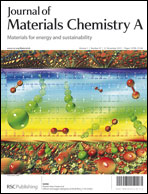Improving the performance of pervaporation membranes via localized heating through incorporation of silver nanoparticles
Abstract
Noble metal nanoparticles (NPs) can efficiently release heat under optical excitation. Applying this principle of plasmonic heating, earlier work on incorporation of gold NPs into hydrophilic or hydrophobic membranes resulted in improved fluxes under laser irradiation without significantly lowering their selectivities. The present study aims at extending the concept of localized heating (plasmonic heating) of membranes to cheaper silver NPs and more energy efficient LED light instead of gold NPs and a laser device. In addition, the application range of the localized heating for membranes is now extended to pervaporation where the evaporation step is expected to benefit from the localized heating. Silver NPs were incorporated into the PDMS based pervaporation membranes by an in situ method, as confirmed by TEM images and UV-Vis spectra. The influence of the plasmonic heating on pervaporation performance of Ag–PDMS membranes was investigated by applying sweep gas pervaporation coupled to 400 nm LED light irradiation. The results indicate that applying LED light irradiation can significantly improve the pervaporation performance of Ag–PDMS membranes. It was concluded that plasmonic heating is an attractive strategy to enhance the pervaporation membrane performance.


 Please wait while we load your content...
Please wait while we load your content...